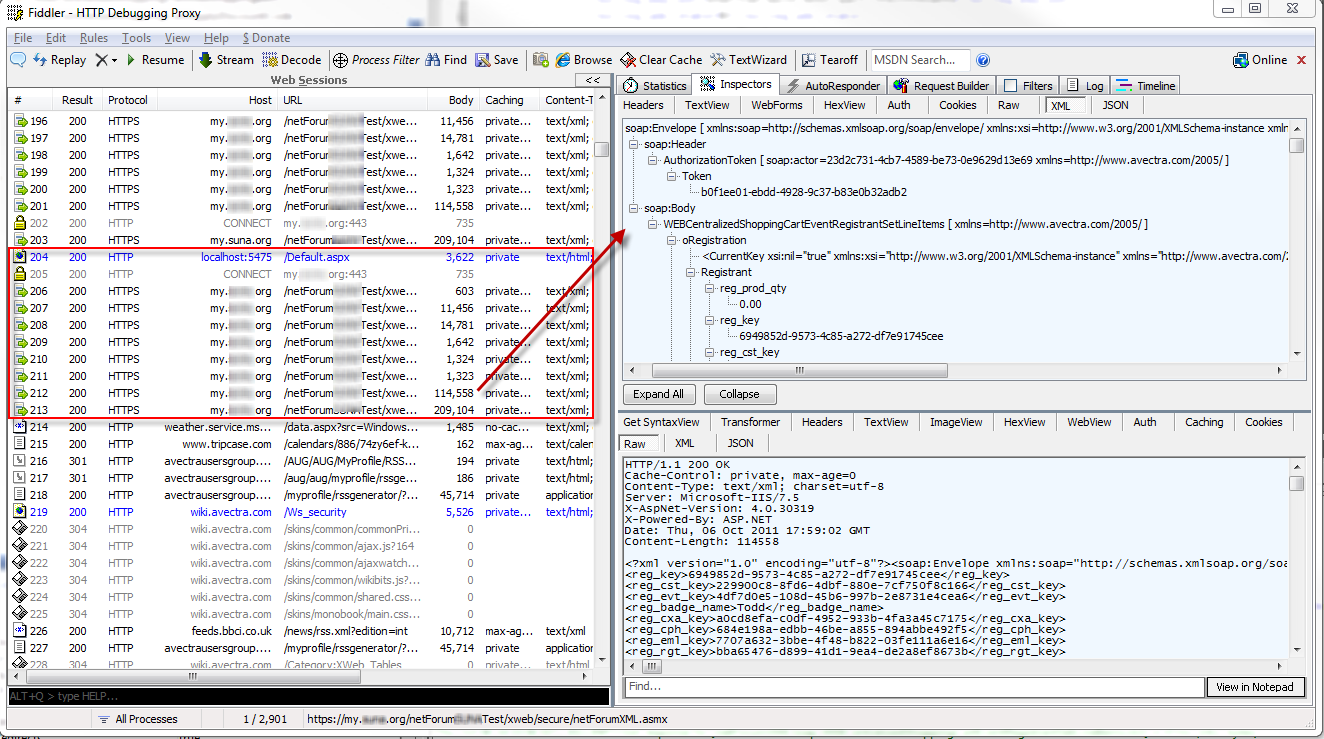Fiddler Web Debugging Proxy
This page outlines some specific tips for using Fiddler web debugging proxy with xWeb.
Fiddler and xWeb
When developing an application that integrates with xWeb, Fiddler is useful for capturing the raw SOAP request the application sends to xWeb.
When working with a development tool that interacts with xWeb via proxy classes, the generation of the SOAP request is handled by the code and neither the raw request or its XML are viewed. The ability to view the raw request is important when debugging or troubleshooting is required. Paste the raw request into a SoapUI request editor to validate the request to inspect for any invalid syntax or formatting. See SoapUI: Testing_xWeb_Methods for more information.
Fiddler also captures the response xWeb returns when a web method is called. If the application code fails to interpret the response, Fiddler allow you to inspect the raw response as it exists before your application code accesses it.
The image below of Fiddler shows the web sessions on the left pane. The right pane shows the details of a specific request. The top right pane shows the XML request of an xWeb web method that was sent to the xWeb address, and the bottom right pane shows the raw response from the method.

Take a closer look at the list of Web Sessions in the left pane. This pane lists all the active sessions running on the computer. Notice that session 204 is for the host localhost:5475. This is a web page for a web application run locally that connects to the xWeb web service. The next session (205) shows how a connection was established to the xWeb web site. The next eight sessions (lines 206 through 213) show a series of eight web requests sent by the web application to xWeb. If you click on any of these lines the right side of Fiddler will show the request your application sent to xWeb on the top and the response from xWeb on the bottom.
Some tips specific to netFORUM xWeb include:
- Because xWeb web sites are running under HTTPS, it is necessary to adjust Fiddler's default settings which typically do not capture requests sent over SSL.
- When developing in .NET, it may be necessary to change some configurations on your machine in order for Fiddler to capture your outgoing requests when running your application in debugging mode locally.
- When running programming code locally, Abila has found doing a project rebuild before running the code improves Fiddler's recognition of outgoing requests.
